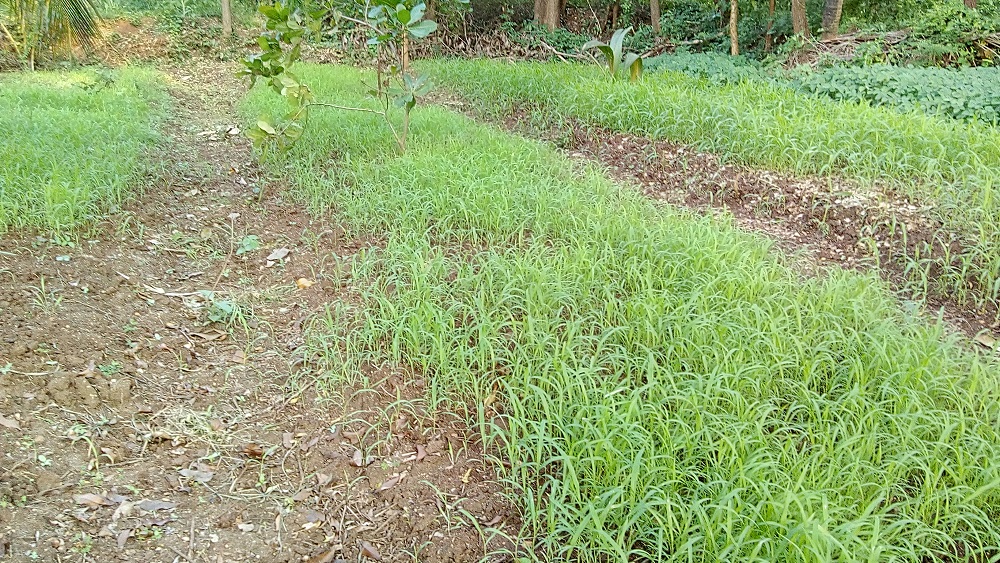Fukuoka san mentions that the straw should be scattered in all direction instead of neatly mulching. Even though this detail looks to be trivial, but is an important point. Natural farming consists of many such details.
From 'One straw revolution'
"Mr. Fujii, a teacher at Yasuki Agricultural High School in Shimane Prefecture, wanted to try direct seeding and came to visit my farm. I suggested that he spread uncut straw over his field. He returned the next year and reported that the test had failed. After listening carefully to his account, I found that he had laid the straw down straight and neat like a Japanese backyard garden mulch. If you do it like that, the seeds will not germinate well at all. With the straw of rye and barley, too, if it is spread too neatly the rice sprouts will have a hard time getting through. It is best to toss the straw around every which way, just as though the stalks had fallen naturally."
From 'One straw revolution'
"Mr. Fujii, a teacher at Yasuki Agricultural High School in Shimane Prefecture, wanted to try direct seeding and came to visit my farm. I suggested that he spread uncut straw over his field. He returned the next year and reported that the test had failed. After listening carefully to his account, I found that he had laid the straw down straight and neat like a Japanese backyard garden mulch. If you do it like that, the seeds will not germinate well at all. With the straw of rye and barley, too, if it is spread too neatly the rice sprouts will have a hard time getting through. It is best to toss the straw around every which way, just as though the stalks had fallen naturally."
Recently while cutting heavy grass could sense that it is too thick for the seeds to germinate and push. In those cases, I kept the mulch aside and then after sowing cowpea scattered it, and when found to be too thick, left some mulch aside so that it can be used later.
In US farmers terminate the cover crop and then cut open the mulch using no-till planter and then sow the seeds through the opening. All these are big machines which are not available for small farmers.
Most cases when you stand in the field, put yourself in the seeds position and think and you will get an answer if they can come through the mulch or not.
In US farmers terminate the cover crop and then cut open the mulch using no-till planter and then sow the seeds through the opening. All these are big machines which are not available for small farmers.
Most cases when you stand in the field, put yourself in the seeds position and think and you will get an answer if they can come through the mulch or not.




























